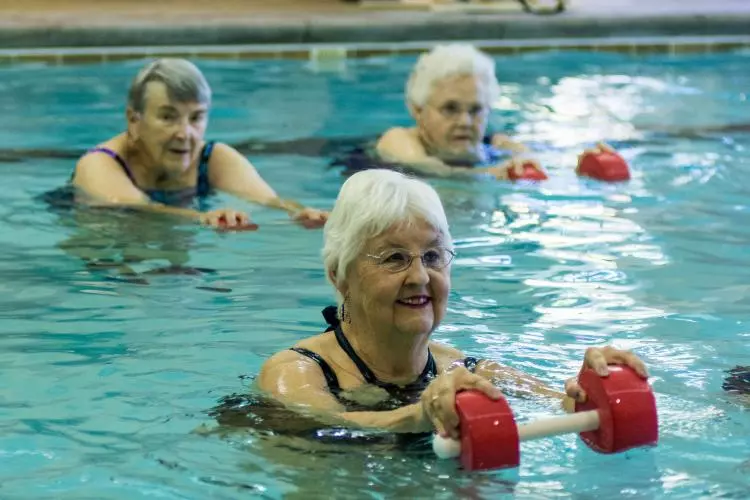
Exercising as You Age: Should You Change Your Routine and How?
Many of us avid exercisers began at a relatively early age. The majority of lifetime exercisers begin in their teens or twenties and develop behaviors that have, or will, carry on into their later years. It is common for these individuals when starting out, to participate in high intensity and/or long-duration activities. With age comes a gradual decline in physical function. What was once an acceptable workout plan early on, can later become not only less efficient but also taxing on the older adult’s body.
Many young adult exercisers develop a habit of relatively shorter warm-up, cool down, and stretching routines. The purposes behind pre and post-workout routines all pertain to preparing muscles, joints, and the circulatory system for the initiation and cessation of higher intensity exercise. Younger exercisers, in general, can tolerate shorter preparation periods for exercise bouts due to enhanced rebounding capabilities of muscles and other soft tissues.
Along with the physical changes that come with age, older adults develop the need for a change in their workouts due to time restrictions as family and career become a priority, the appeal and/or dedication to fitness is often set aside. It is important to begin adjusting your workout routine in a way that will protect your body while maximizing results.
Adapting workouts to changing body needs can be relatively simple. Reducing weights in resistance training or decreasing distance and/or speed in endurance activities is often critical to injury prevention. Repetition of 10 to 15 times for resistance and weight training is an optimum method for utilizing lighter weights while still maintaining an effective intensity. Appropriate distance and speed modifications will vary greatly from person to person.
The stretching and cool-down portion of an exercise routine should progressively become a higher priority. A cool-down period in the range of 15 to 20 minutes that incorporates gentle stretches is ideal. Additional focus on active recovery enables more efficient healing and muscle repair.
Finally, as available free time dissipates due to life commitments, the avid exerciser must find creative and efficient ways to tailor their workout to the new time constraints. Often this can be challenging to determine. A personal trainer or other fitness professional may be able to help you find time and construct a routine to help you meet your fitness goals. For more information, or to talk to a Wellness Specialist at Givens Estates, please contact Ryan Andrews at 828-771-2224 or email [email protected].